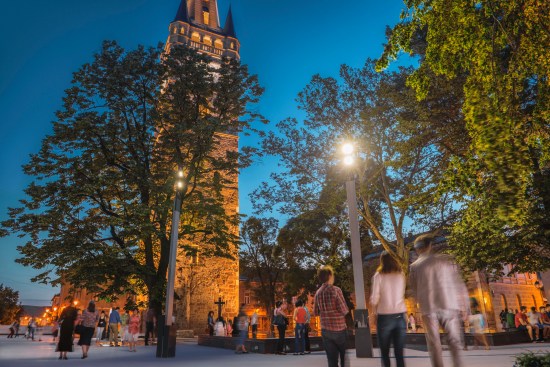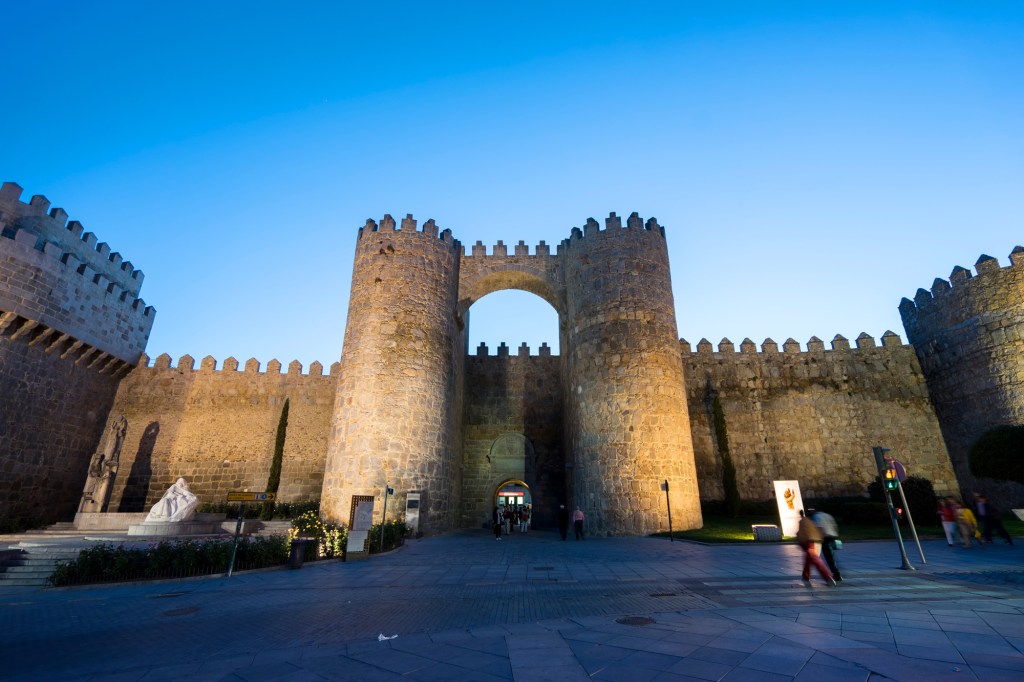The 13th
City.People.Light Awards were presented on Sept. 25 in Helsinki, Finland, during the LUCI (Lighting
Urban Community International) Annual General
Meeting. Six cities were acknowledged for their urban lighting projects. First
Prize went to Avila, Spain; Second Prize was awarded to Valenciennes, France;
Third Prize was made to Baia Mare, Romania; two Special Mentions were given,
one to the city of Amsterdam, the Netherlands, and the other to Taipei, Taiwan;
and finally the People’s Choice Award was given to Melilla, Spain.
This year’s first prize winner, the town of Avila, is located in central Spain. A UNESCO World Heritage site, Avila is often referred to as the “Town of Stones and Saints” because of the number of Romanesque and Gothic churches located there. The town’s new nightscape lighting master plan includes a complete upgrade of all the existing streetlighting so that it is both functional while incorporating decorative elements. “The new lighting plan reinforces the city’s outstanding cultural values while being infused with the philosophy of conservation that has given the city such a proud heritage,” said lighting designer Rafael Gallego of Madrid-based Aureolighting, the lighting firm overseeing the work. “The lighting masterplan for Avila is based in a new lighting philosophy that takes into consideration four areas: functional, architectural, commercial and festive lighting.” In awarding Avila the first prize the jury commented, “The use of light is well thought through in the entire city, taking into account urban design principles such as sustainability and the architectural integration of the lighting systems.”
Second
Prize went to the city of Valenciennes,
France, who was recognized for its lighting masterplan — Artistic Escapes at Twilight. The work includes
the renovation of 41 existing architectural lighting systems within
the city and the creation of nine new architectural lighting projects. The new
lighting masterplan incorporates two of the city’s main nocturnal routes, one
which measures 1,100-meters-long and the other which is 700-meters-long
(approximately 1,200 yards by 765 yards), that meet in the center of the town.
The new design incorporates interactive elements so that the city inhabitants
are inspired to discover the architectural heritage of Valenciennes and its nightscape. The lighting scheme is the work
of French lighting designer Roger Narboni and his firm Studio Concepto.

PETRICE BOGDAN
St. Stephen's Church in Baia Mare, Romania
The third prize was awarded to the city of
Baia Mare in Romania. The municipality was recognized for the Rehabilitation of
Fortress Square, which is part of an urban
masterplan to completely reconstruct the city center, first begun in 2005. The
new lighting highlights the buildings, trees, principal city routes, and
emphasizes the main landmarks of the city: St. Stephen’s Tower, the ruins of
St. Stephen’s Church, the Church of Saint Catherine, and the Saint Martin
Church. The lighting design was overseen by Mitru Ildiko, chief architect for
the project.
Two Special Mentions were made to projects in the city of Amsterdam and
Taipei. “Hang in there,” in Amsterdam,
makes use of an old railway bridge and underpass adjacent to Amsterdam’s central train station. Developed
by lighting designers Jasper Klinkhamer and Matthijs ten Berge, 36 beams of light
are aimed above the water and illuminate in a recurring fade-in and
fade-out cycle to create a “spectacle of light and reflection.” The newly
illuminated underpass connects the old historic city on one side with new urban
development overlooking the harbor.
Treasure Hill Village, in Taipei, Taiwan, is located in the Gonguan district of the city along the Xindian River. The village has a long tradition of urban farming along the riverbanks and the lighting concept, conceived of by architect Ivan Juarez of San Luis Potosi, Mexico-based x-studio, uses light to recall this important activity and the juxtaposition between the natural and the man-made world.
The People’s Choice Award was made to the Victoria Grande Fortress in Melilla, Spain. Originally built in 1736 by Juan Martín Zermeño, a military engineer, the fortress also served as a prison before succumbing to ruin. The site has undergone extensive reconstruction and is now a popular and oft-visited historic site. The lighting design, conceived of by Javier Górriz of Diseño y Consultoría de Iluminación, in Almería, Spain, creates a series of nocturnal lighting displays across the surfaces of the historic fort.
The City.People.Light program was established in 2003 by LUCI and Philips to recognize the work of municipalities as they implement lighting strategies that address the unique aspects of urban environments to create sustainable and livable cities. Since the program was initiated, 78 cities have been recognized for their outdoor lighting programs.
